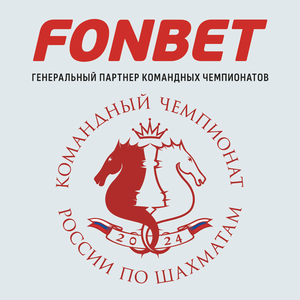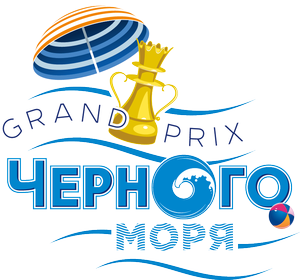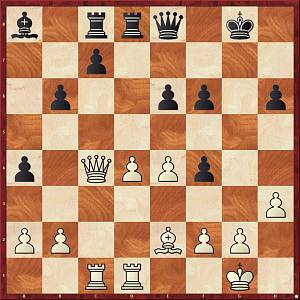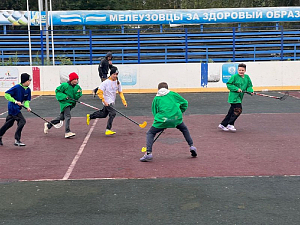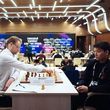26 December 2016
Transition into New Time Format
Round Four of the Nutcracker Tournament in the review of Eteri Kublashvili.
When looking at the pictures attached to this review one may notice that the majority of players are captured either in full or a three-quarter profile to the camera, same way as ancient Egyptians are depicted in their colored drawings. It was not done on purpose and was due to the photographer, the author of these lines, being late for the start of the round no matter how hard she tried for things to be otherwise. Meanwhile, sneaking at the players’ backs in search of a better angle following half an hour of the game start just does not do. My thanks go to the chief arbiter Alexander Tkachev for not enforcing the “zero tolerance” rule.Making itself felt are the approaching winter holidays with its snow and ice: Moscow is almost frozen in traffic jams with online traffic maps painted in all shades of red wine colors. While sitting in a dead traffic jam on the Moskvoretskaya Naberezhnaya and dreaming of accelerating to at least 10 km/h, I could not help recalling the “Crematorium” song “The Garbage Wind”, especially that its part about “vehicles replacing people.”
However, classical round four in the Central House of Chess (the final round prior to the rapid event) saw very dynamic chess, especially in the men’s section.
Although all men’s games ended in draws, the fight was very interesting at each board and definitely worthy of a more detailed analysis.
Sergey Shipov’s first visitors were Aleksey Dreev and Vladislav Artemiev. “It looks like an unfinished novel short of a few chapters,” this is how the grandmasters’ game was summed up by our commentator. The opponents handled the opening into the Slav defense, where the first player Dreev opted for the most principled line, giving up the bishop for two queenside pawns. However, a couple of moves later the opponents got an opportunity to force a draw by repetition, which they did. However, White had an opportunity to keep up the fight, giving up the exchange to get a very complex position.
Grandmasters spent a lot of time analyzing this position at a press conference, and Alexey Dreev summed up by noting that Black had an easier play in this position, whereas White had difficulty deciding even on the very first move. “If it comes to time trouble nothing is to be ruled out,” admitted Artemiev.
Vladimir Fedoseev played extremely risky chess as White against Boris Gelfand. In the Rossolimo system of the Sicilian Defense White started pushing the h-pawn as early as move seven, but after a few moves gave it up first to follow it by giving up an exchange. It goes without saying that Fedoseev had initiative for the sacrificed material, won back his pawn a move later and even managed to castle long, but went on to play very sharp chess and left his knight en prise at a certain moment of the game. Boris refrained from accepting this offering and instead defined his king’s position by castling long as well. Following massive simplifications and restoring material balance, the opponents agreed to a draw after Black’s move 40.
During the press conference the grandmasters checked the lines that would have arisen should Boris have taken the offered knight.
Fedoseev – Gelfand
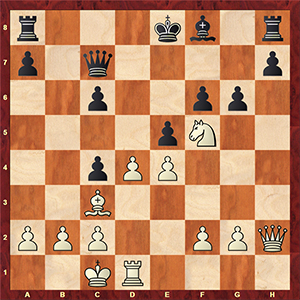
White has just played 20.d4, leaving the knight en prise.
Below is the line voiced by Vladimir: 20…gxf5 21. dxe5 Bg7 22. Qh5+ Qf7 23. Qxf7+ Kxf7 24. Rd7+ Ke6 25. Rxg7 fxe5 26. dxf5+ Kxf5.
“Here I definitely believed that I would have no problems bailing out,” shared Fedoseev about the train of his thoughts during the game.
However, instead of 21…Bg7 the engine offers 21…h5 or 21…Qg7, and the arising positions call for indepth analysis.
Daniil Dubov and Alexander Morozevich’s game was unfolding pretty uneventfully so that a draw signed after Black’s move 28 was the most natural outcome.
The lengthiest battle happened between Alexei Shirov and Grigoriy Oparin in the Sämisch system of the Nimzo-Indian Defence. The game went along the positional lines and reached the endgame with two bishops for White and two knights for Black in which Oparin could have demonstrated the power of the latter. Black carried out a convenient regrouping his pieces and won a pawn, but at the end of the day a pair of bishops took its toll and White managed to achieve a draw.
With four classical rounds behind, the score has become 17-15 in favor of “Kings.” The individual standings are as follows:
1-2. G. Oparin, A. Shirov - 5 points; 3-7. V. Artemiev, A. Dreev, D. Dubov, A. Morozevich, Boris Gelfand - 4 points; 8. V. Fedoseev with 2 points.
In the women’s section “Queens” took a strong revenge on “Princesses” by defeating them 6-1 and spurting into a 17-15 lead.
The victories for their team in round four were delivered by Galina Strutinskaya, over Alexandra Dimitrova, by Alisa Galliamova over Elizaveta Solozhenkina and by Ekaterina Kovalevskaya over Polina Shuvalova in a lengthy struggle. Elena Zaiatz and Aleksandra Maltsevskaya finished their game in a draw.
Participants’ individual standings:
1. A. Galliamova - 6 points; 2-3. P. Shuvalova, A. Maltsevskaya - 5; 4-5. E. Zaiatz, Kovalevskaya - 4; 6-7. E. Solozhenkina, G. Strutinskaya - 3; 8. A. Dimitrova with 2 points.
Sergey Shipov summed up the classical tournament standings:
"In the men’s tournament all players lacked aggressive attitude to a certain degree. This applies even to Dreev, who scored more than any other player. In round three he had advantage over Dubov but was too cautious with his play, while in round four he could have sacrificed a rook for a knight to compete for advantage, but was unsure about the strength of his position. They say it is better be safe than sorry. In general, this type of psychology occurs in men more often than women. It’s a pity that chess players overdo it with safety so much.
"Nevertheless, on a whole there were many quality games played with something for your eyes to feast upon. Thus, Fedoseev and Gelfand delivered a beautiful display in round four.
"Out of picture so far is Volodya, who performed surprisingly weak in the first three games. I must admit that before this tournament, as well as two years ago, I expected none else but Fedoseev to be the soloist setting the pace for the “Princes” teams. It seems to me that Volodya was too much willing to go to Zurich, too willing to win, this explaining an excessive volume of risk taken by him at the board. His wishes just did not match his abilities.
"In the team of “Kings” we need to highlight Alexei Shirov. He is seen to perform with a margin of safety and can add up in play. By the way, he is an even better rapid than classical player, and I think he has a great chance to make it into Zurich. In my opinion Alexei Shirov is a favorite rapid chess player here.
"However, if speaking in terms of team results, then I say the chances are about equal because the “Princes” are already solid, established players. I said on the air that the “Princes” team would ideally feature players aged 15-16 years, but we probably just do not have such lads that could put up resistance to the team of “Kings.” However, let us remember the 18-year old Ponomarev who won the World Cup here in Moscow, so I think that it is time to turn into “kings” at 20. In our case the term “princes” is situational, we just have a team of young grandmasters and those somewhat more advanced in years.
"As for the women’s tournament, it is a stack of surprises. Suffice it to recall what happened in round three... With such superiority in class I never expected “Queens” to go down “-2” in the round match, which is something akin to a miracle. However, “Princesses” are young girls who know to deliver pleasant surprises to their opponents.
"Ekaterina Kovalevskaya is not in her best shape, but even Alisa Galliamova does not convert positions she is expected to win in blitz games. Nevertheless, I believe the miracle times are about to finish. In round four “Queens” struck back, and I think their class should tell in the end. I vote for “Queens” in rapid chess as well.
"In the team of “Princesses” I really like Polina Shuvalova - she features a very “adult” style of play. Maltsevskaya demonstrates her talent and it is clear that she has a great future. Although it is young female chess players’ first appearance in the limelight of our reviews, it is obvious that they are at the onset of successful chess careers."









